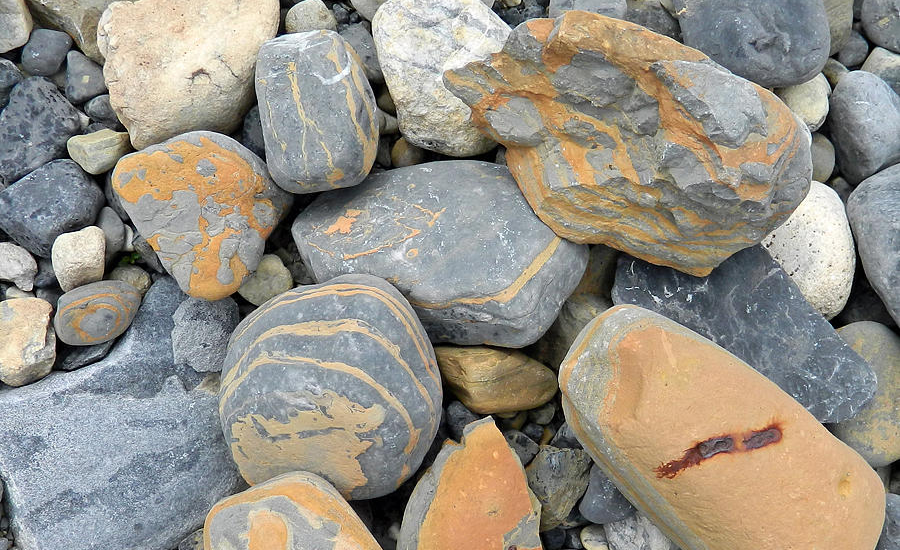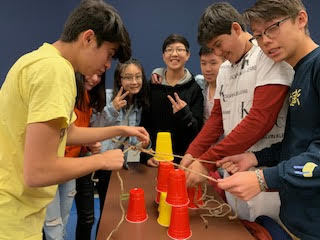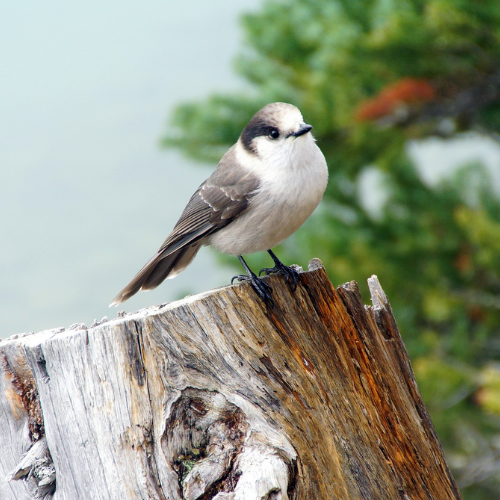Find wellness and mindfulness by connecting with one of the oldest beings within nature… rocks!
PURPOSE
GRADE LEVELS
2-12
SUBJECTS
Health & Wellness
Social Studies

SKILLS DEVELOPED
Personal growth and well-being
Creativity and innovation
MATERIALS NEEDED
Small rocks found outside
TIME
Instructions
- Some Indigenous Nations view rocks as being not only one of the oldest natural elements, but their Elders and storytellers. This activity is based on a teaching gifted to Jaclyn Angotti by Karlee Fellner, who received it from mistahaya. From Fellner's thesis* "Returning to our medicines : decolonizing and indigenizing mental health services to better serve Indigenous communities in urban spaces", we are introduced to mistahaya: "St’at’imc from Tsalalh, or the Seton Lake Band in BC. As a counselling psychologist, his areas of interest include Indigenous concepts of well-being and/or mental health; effectively synthesizing Indigenous and mainstream healing approaches; inner resilience activities that sustain Indigenous men; Indigenous Research Methodologies and Somatic Transformation" (p. xi).
- Here is a script that you can adjust for your context:
- I am walking around with a bag of rocks. Look at the rocks and pick up one that calls to you. As you hold your rock, I invite you to close your eyes or soften your gaze. Focusing on the rock in your palm. Feel the texture of the rock (rough/smooth), feel the weight of the rock (light or heavy). As you focus on your rock, draw your attention to your breath. Slowly expand your stomach as you breathe in, as your stomach fills then start to expand your lungs with breath. Count to 8, hold for a moment, then slowly exhale for a count of 8. Gently releasing the air, allowing your stomach to collapse and then your lungs to deflate. Repeat this deep breath 3 times.
- This rock we hold has a story. It has been around before the time of people and will remain on Earth for eons into the future. This rock was once atop a mighty mountain, weathering the winds, snow and ice. This rock has been a small grain of sand in the sea, washing along the beaches on a warm island. The story of the rock in your hand is long and unending, a story of strength and perseverance. As such we can call these stones in our palms our Grandfathers and Grandmothers.
- Because our grandmother and grandfather rock is older and stronger than us, we can give them our worries and anxiety. Think of one thing in your world that makes you anxious or nervous. Pause. I want you to feel how this thing makes you feel. Pause. Picture this feeling as a color in your chest. Pause. As you inhale, slowly gather this color into your chest. As you exhale, allow this color to flow into the rock. Repeat three times.
- Now that your anxiety and worry has been transferred into this rock I will walk around and collect them.
- I will take these rocks and your worries to a stream of water, allowing the purifying water to wash away your worries. I may also smudge these stones, allowing the sacred purifying smoke to flow your worries away.
- Participants who have worries or find it hard to connect to the Earth due to anxieties may find this meditation helpful to bring peace to their mind.
*Original teaching from mistahaya as found in Fellner's thesis: “I was just reading something too, particularly in urban environments, about the importance of getting out on the land. To remind people that underneath all this concrete and steel the land's still there. The power of the land is still there. Just because it's covered up doesn't mean it's gone. And also to remember that the power of the land will stay strong or revitalize when we acknowledge it and connect with it. Sometimes to help people get started you can offer them little things too. Like I have this rock that was gifted to me by a friend and it's from the Crazy Horse memorial carved next to Mt Rushmore in the states. Lately I've just been giving that to clients to hang onto when they feel like they're carrying a lot. I tell them, "you can give your anxiety and your worries to that rock because the rock's older and stronger than we are, it'll be here long after we're gone. You can take it." I've found that's been quite useful for clients. Or just giving them little worry rocks to hang on to then taking responsibility for brushing them off, whether it's with cedar or water or sage or smudging the rock after, carry their worries away. It doesn't have to be complicated or complex. Not everything requires a full day ceremony” (p. 285-286)
Discussion
- Very similar to everything in nature, all things exist in cycles and as their worries get washed away by the lake or the river or the pond, their worries blend into the ecosystem and recycle into the plants, animals, insects, and all the elements within the water.
- Note that it is important not to keep the rock worry but to bring it back to the water and have the worries washed away!
- How did you feel when your worries were washed away?
- Do you feel a change in your emotions after this activity?
- Who are the Elders in your life? Who do they go to when you are worried or anxious about something? Remember to turn to your Elders and to nature to help support your mental health.
- How else do you think nature can help you feel better?
More Bring Nature Home for Families
Bring Nature Home is our online database of tried-and-tested CPAWS Southern Alberta activities! Here are some ways that you can bring nature home (or to the classroom) today!

Rock, Paper, Scissors, Frog!

Climate Action With Cups

